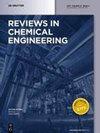废水电化学氧化阳极的研究进展
IF 6.6
3区 工程技术
Q1 ENGINEERING, CHEMICAL
引用次数: 2
摘要
摘要综述了阳极材料及其合成方法的最新进展,重点介绍了它们在处理实际工业废水中的相容性,提高了选择性、电催化活性、高浓度稳定性,从而降低了有机污染物降解的矿化成本。第一节讨论了溶胶-凝胶技术的进展,包括Pechini方法。还包括与电沉积方法的选择及其决定参数有关的单独讨论。此外,还讨论了使用先进加热方法(包括微波和激光沉积合成)的效果。接下来,对使用不同类型的阳极材料及其在直接和间接氧化中对活性•OH自由基生成、活性和电极稳定性的影响以及未来方面进行了单独的讨论。分别讨论了使用不同合成方法、添加剂和掺杂对每个阳极的影响。石墨烯、碳纳米管(CNTs)和金属掺杂提高了阳极的活性位点数量、电化学活性和矿化电流效率(MCE)。然而,微波或激光加热方法被证明是传统加热的有效、廉价和快速的替代方法。电沉积和非水溶剂合成是一种方便、环保的金属导电膜和聚合物导电膜沉积技术。本文章由计算机程序翻译,如有差异,请以英文原文为准。
Research trends in the development of anodes for electrochemical oxidation of wastewater
Abstract The review focuses on the recent development in anode materials and their synthesis approach, focusing on their compatibility for treating actual industrial wastewater, improving selectivity, electrocatalytic activity, stability at higher concentration, and thereby reducing the mineralization cost for organic pollutant degradation. The advancement in sol–gel technique, including the Pechini method, is discussed in the first section. A separate discussion related to the selection of the electrodeposition method and its deciding parameters is also included. Furthermore, the effect of using advanced heating approaches, including microwave and laser deposition synthesis, is also discussed. Next, a separate discussion is provided on using different types of anode materials and their effect on active •OH radical generation, activity, and electrode stability in direct and indirect oxidation and future aspects. The effect of using different synthesis approaches, additives, and doping is discussed separately for each anode. Graphene, carbon nanotubes (CNTs), and metal doping enhance the number of active sites, electrochemical activity, and mineralization current efficiency (MCE) of the anode. While, microwave or laser heating approaches were proved to be an effective, cheaper, and fast alternative to conventional heating. The electrodeposition and nonaqueous solvent synthesis were convenient and environment-friendly techniques for conductive metallic and polymeric film deposition.
求助全文
通过发布文献求助,成功后即可免费获取论文全文。
去求助
来源期刊

Reviews in Chemical Engineering
工程技术-工程:化工
CiteScore
12.30
自引率
0.00%
发文量
37
审稿时长
6 months
期刊介绍:
Reviews in Chemical Engineering publishes authoritative review articles on all aspects of the broad field of chemical engineering and applied chemistry. Its aim is to develop new insights and understanding and to promote interest and research activity in chemical engineering, as well as the application of new developments in these areas. The bimonthly journal publishes peer-reviewed articles by leading chemical engineers, applied scientists and mathematicians. The broad interest today in solutions through chemistry to some of the world’s most challenging problems ensures that Reviews in Chemical Engineering will play a significant role in the growth of the field as a whole.
 求助内容:
求助内容: 应助结果提醒方式:
应助结果提醒方式:


